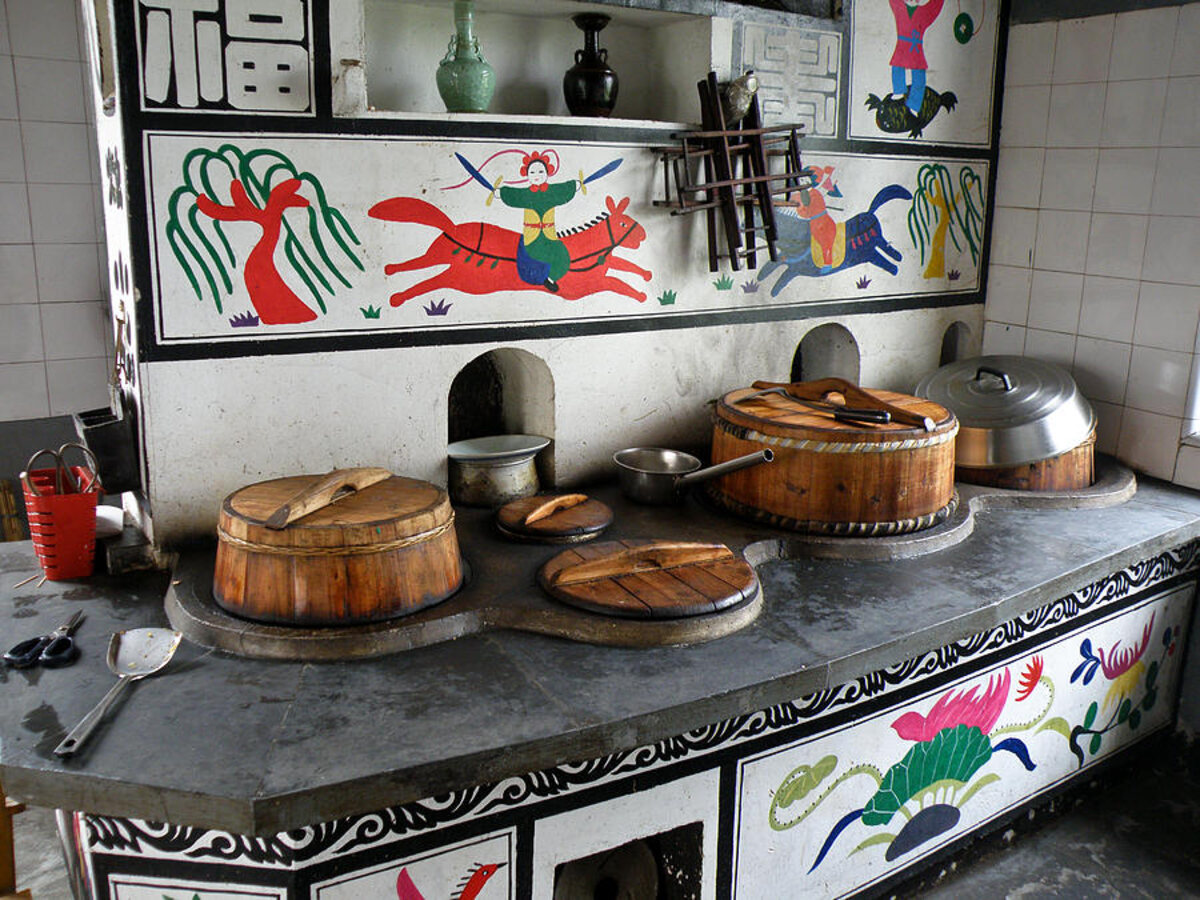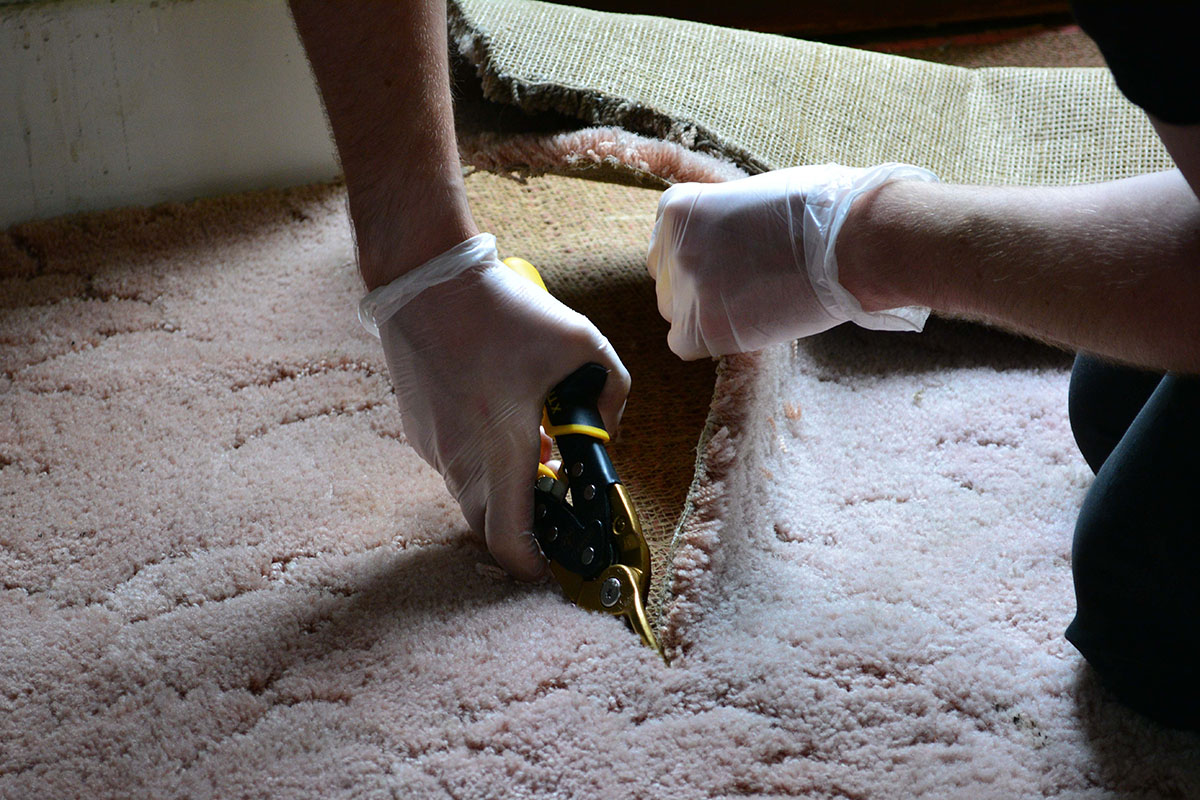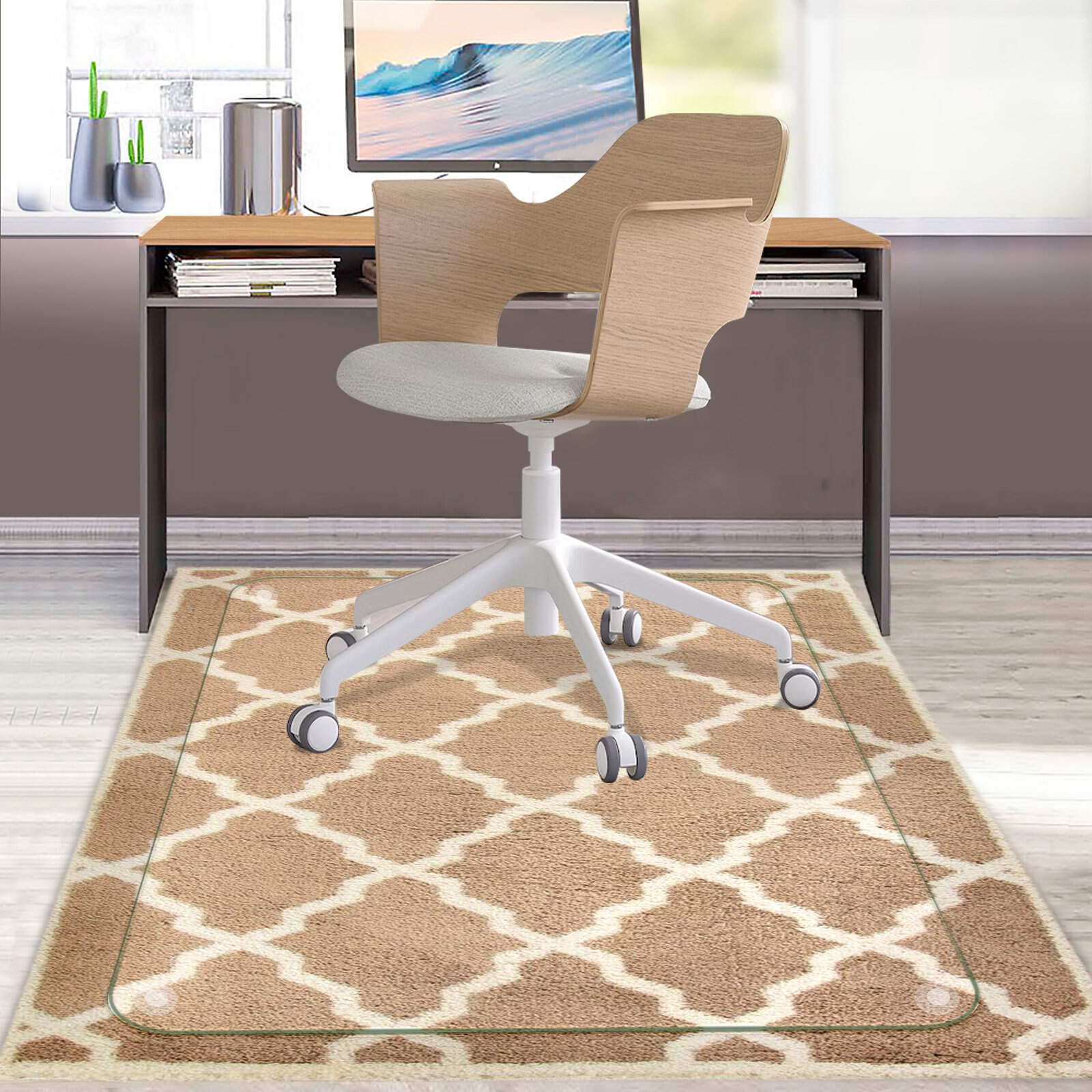Home>Ideas and Tips>Unearthing Ancient Flooring Beneath Carpet


Ideas and Tips
Unearthing Ancient Flooring Beneath Carpet
Modified: October 28, 2024
Discover the hidden beauty of ancient flooring beneath old carpets. Learn how to uncover, restore, and maintain your hardwood floors for a timeless look.
(Many of the links in this article redirect to a specific reviewed product. Your purchase of these products through affiliate links helps to generate commission for Storables.com, at no extra cost. Learn more)
Introduction
When you think of home improvement, one of the most exciting and rewarding projects is uncovering hidden treasures beneath old carpeting. For many homeowners, the thrill of discovering ancient flooring beneath worn-out carpets is akin to finding a hidden treasure. This article will guide you through the process of uncovering and restoring your hidden hardwood floors, exploring the history behind different types of flooring, and providing practical tips for each step of the journey.
Read more: How To Carpet A Basement Floor
The History of Flooring
Before diving into the process of uncovering hidden flooring, it's essential to understand the evolution of flooring materials and techniques. From ancient civilizations to modern times, flooring has played a crucial role in architecture, reflecting technological advancements, cultural influences, and aesthetic preferences.
Ancient Beginnings
In ancient times, the primary flooring material was the earth itself. Early humans would smooth and harden the ground with clay, sand, or crushed stone to create rudimentary floors. In Mesopotamia, the cradle of civilization, they started experimenting with fired bricks, leading to the inception of the earliest brick flooring. Ancient Egypt, known for its advanced craftsmanship, used stone extensively for flooring. The Egyptians mastered the art of quarrying and polished limestone, granite, and marble to adorn their palaces and temples with visually stunning mosaic patterns.
Roman Ingenuity
As we journey further into history, we arrive in ancient Rome, a civilization renowned for its architectural prowess. The Romans elevated flooring to a whole new level with their extensive use of concrete—a game-changer in construction. They poured concrete into wooden molds, resulting in sturdy and durable floors that paved the way for innovative designs. Intricate mosaic floors, known as “tessellated pavements,” became prominent, displaying captivating geometric patterns and breathtaking scenes.
Medieval Tapestries
Transitioning into the medieval era, we witness a shift towards more decorative flooring. Stone and wooden floors were often covered with vibrant tapestries, and wealthy households began using woven rugs and carpets to add warmth and color to their interiors. These lavish textiles, handcrafted with intricate designs and rich colors, became a symbol of status and luxury.
Read more: How To Stabilize A Floor Lamp On Carpet
The Renaissance of Wood
With the onset of the Renaissance, a renewed interest in classical architecture sparked a resurgence of wood as a favored flooring material. Intricately crafted parquet floors, comprised of small wood pieces arranged in geometric patterns, adorned the grand palaces and estates of Europe. The era also witnessed the advent of wood floor finishing techniques, like varnishing and oiling, which enhanced both durability and aesthetics.
Victorian Extravaganza
In the 19th century, the Victorian era introduced an eclectic mix of flooring styles. Elaborate geometric tile patterns and encaustic tiles—made using colored clay—are emblematic of this period. These tiles embellished the foyers and hallways of many affluent Victorian households, showcasing an era of opulence and elegance.
Industrial Revolution
The Industrial Revolution brought significant changes to flooring materials and production methods. Mass-produced carpets, woven using power looms, became more accessible to the middle class. However, a groundbreaking invention emerged during this time – linoleum. Made from natural materials such as linseed oil, cork dust, and wood flour, linoleum offered a durable and hygienic alternative to traditional floorings, gaining popularity in both residential and commercial spaces.
Modern Marvels
As the 20th century progressed, concrete emerged as a versatile and cost-effective flooring material. Its inherent strength, flexibility, and low maintenance made it a favorite for industrial and commercial spaces. Additionally, advancements in technology introduced other innovative flooring options like vinyl, laminate, and rubber, catering to a wide range of preferences and applications.
Sustainable Sensibilities
In recent times, environmental awareness has influenced the flooring industry, leading to the rise of eco-friendly and sustainable materials. Bamboo, a rapidly renewable resource, gained popularity due to its strength and eco-friendliness. Recycled materials like reclaimed wood and recycled rubber now grace contemporary interiors, reflecting a commitment to sustainable living.
Identifying the Presence of Wood Floors Under Carpet
The thrill of discovering hidden hardwood floors under old carpeting is exhilarating, but it's crucial to be prepared for different scenarios when you peel back that worn-out carpet.
Scenarios You Could Face When Uncovering Wood Floors
When revealing what lies beneath your carpet, expect the unexpected. You could be greeted by an expanse of perfectly preserved hardwood, ready to be polished and cherished. Alternatively, you might find hardwood floors that have been damaged over time due to spills or high traffic. In some cases, homeowners may discover layers of linoleum or plywood rather than hardwood. This is more likely in homes built during the ’70s and ’80s when the trend leaned more towards carpet and linoleum flooring.
Tools Needed for Carpet Removal and Floor Cleaning
Before diving into your carpet removal project, make sure you have the necessary tools on hand. You’ll need a utility knife to cut the carpet into manageable strips, pliers to pull up the carpet, and a pry bar to remove the tack strips that hold the carpet in place. For cleaning the hardwood floor, a broom or vacuum cleaner will help you remove dust and debris. You may also need a scraper or putty knife to remove any carpet glue or padding residue stuck to the floor.
Read more: How To Replace A Carpet With Vinyl Flooring
Preparing for the Unveiling
Checking the Wear Layer
When you start to tug at the old carpeting and the hardwood floors are revealed, you need to check the wear layer to see if they can be refinished. The wear layer is the top layer of the wood, above the tongue and groove joints. Solid hardwood floors can go through more refinishing than engineered floors, and hopefully, you’ve discovered floors that still have a thick enough wear layer to bring them back to life.
Damage Done by Years of Carpeting
Carpeting started becoming popular in the 1960s, and although your home may not have the thick brown shag carpeting that was originally installed, the hardwood underneath may have taken quite a beating from years of carpeting. Carpets can be installed in a variety of ways, from glue to staples to screws and nails. That means that the wood underneath may have seen its share of damage throughout the years. Plus, you may be surprised at how dirty and stained the wood will be. After all, red wine may be cleaned out of the carpet, but a remnant may still be left on the wood underneath. You also may find dirt and pet dander around the edges where it’s been pushed underneath the carpet. Fortunately, a professional sanding and refinishing job will take care of all the damage.
Revitalizing Old Hardwood Floors
No matter how terrible the state of the wood floors, sanding off the stained and damaged top layer and putting on a nice finish is all you need to give your home good-as-new hardwood floors. If there are a few boards that need replacing, a skilled flooring craftsman can help you match the wood and the stain for a beautiful result. With most solid floors, even some engineered floors, there’s an excellent chance that you can have the floor sanded and refinished, revealing classic, warm, and timeless wood floors.
Restoration Process
Assessing the Condition of the Floor
The first step in restoring your hardwood floors is assessing their condition. Look for any signs of damage such as scratches, dents, or water stains. Check for any loose boards or uneven surfaces that need attention. If you find any significant damage, it may be necessary to replace those boards before proceeding with refinishing.
Choosing the Right Stain and Finish
Once you've assessed the condition of your floors, it's time to choose the right stain and finish. Consider the color and style of your home's interior design. If you're looking for a classic look, choose a traditional stain like oak or maple. If you want something more modern, consider a darker stain or a glossy finish.
Sanding and Refinishing
Sanding is an essential part of the restoration process. Use progressively finer grits of sandpaper to smooth out the surface of your floors. Start with coarse grit sandpaper (about 80-100) to remove old finishes and scratches. Move on to finer grits (120-150) for a smoother finish. Finally, use very fine grit sandpaper (220-240) for a high-gloss finish.
Applying Stain and Finish
After sanding, apply your chosen stain evenly across the surface of your floors. Allow it to dry according to the manufacturer's instructions before applying a finish coat. You can choose from various types of finishes like polyurethane, varnish, or oil-based finishes. Each type has its own advantages and disadvantages, so choose one that suits your needs.
Maintaining and Protecting Your Newly Discovered Hardwood Floors
Once you've restored your hardwood floors, it's crucial to maintain them properly to keep them looking their best. Here are some tips:
- Regular Cleaning: Use a broom or vacuum cleaner to remove dust and debris regularly. Avoid using too much water as it can damage the finish.
- Avoid Heavy Furniture: Place felt pads under heavy furniture legs to prevent scratching.
- Use Area Rugs: Place area rugs in high-traffic areas to reduce wear and tear.
- Avoid Direct Sunlight: Direct sunlight can cause fading, so consider using curtains or blinds.
- Professional Maintenance: Schedule regular professional maintenance checks to ensure your floors remain in good condition.
Conclusion
Uncovering hidden hardwood floors under old carpeting is indeed a thrilling adventure. It not only adds beauty and property value to your home but also provides an opportunity to connect with history. By understanding the evolution of flooring materials and techniques, you can better appreciate the unique characteristics of your newly discovered floors. With proper preparation, restoration, and maintenance, you can transform your old carpeted floors into stunning hardwood masterpieces that will be cherished for generations to come.
For more information on how to uncover and restore your hidden hardwood floors, consider consulting with a professional flooring expert. They can provide personalized advice based on the specific condition of your floors and help you achieve the desired look for your home. Whether you're a homeowner looking to renovate or simply curious about the hidden potential beneath your feet, this guide has provided you with all the necessary steps to embark on this exciting journey of unveiling the hidden beauty of your hardwood floors.
Was this page helpful?
At Storables.com, we guarantee accurate and reliable information. Our content, validated by Expert Board Contributors, is crafted following stringent Editorial Policies. We're committed to providing you with well-researched, expert-backed insights for all your informational needs.











0 thoughts on “Unearthing Ancient Flooring Beneath Carpet”